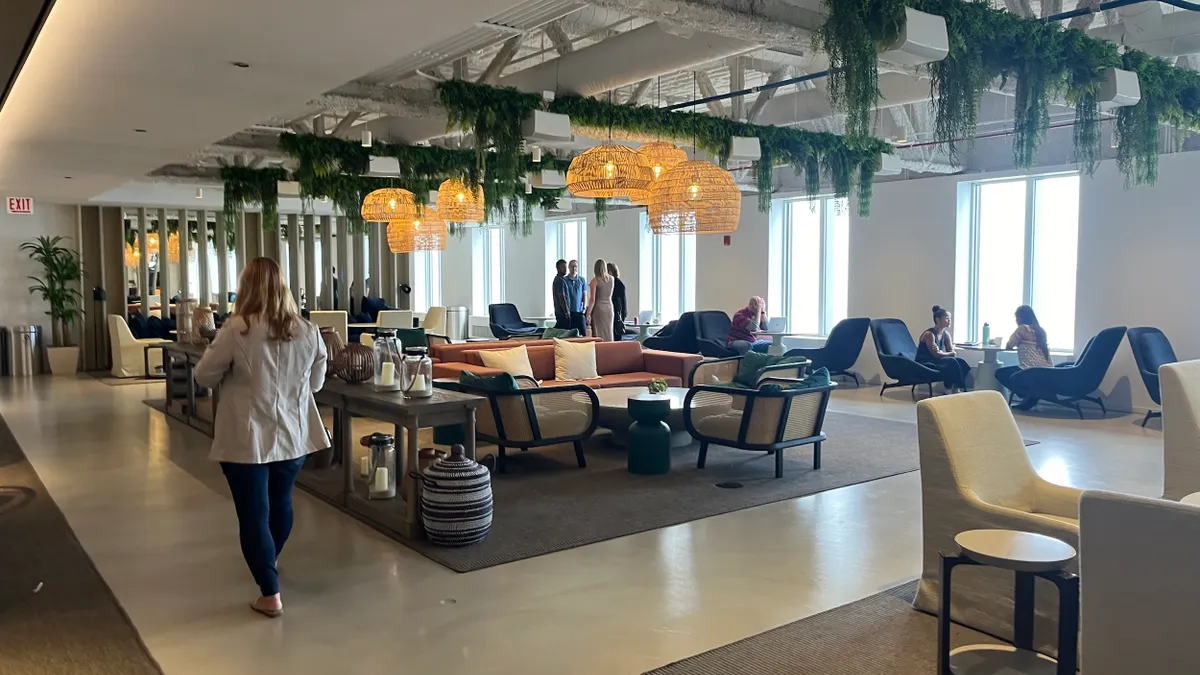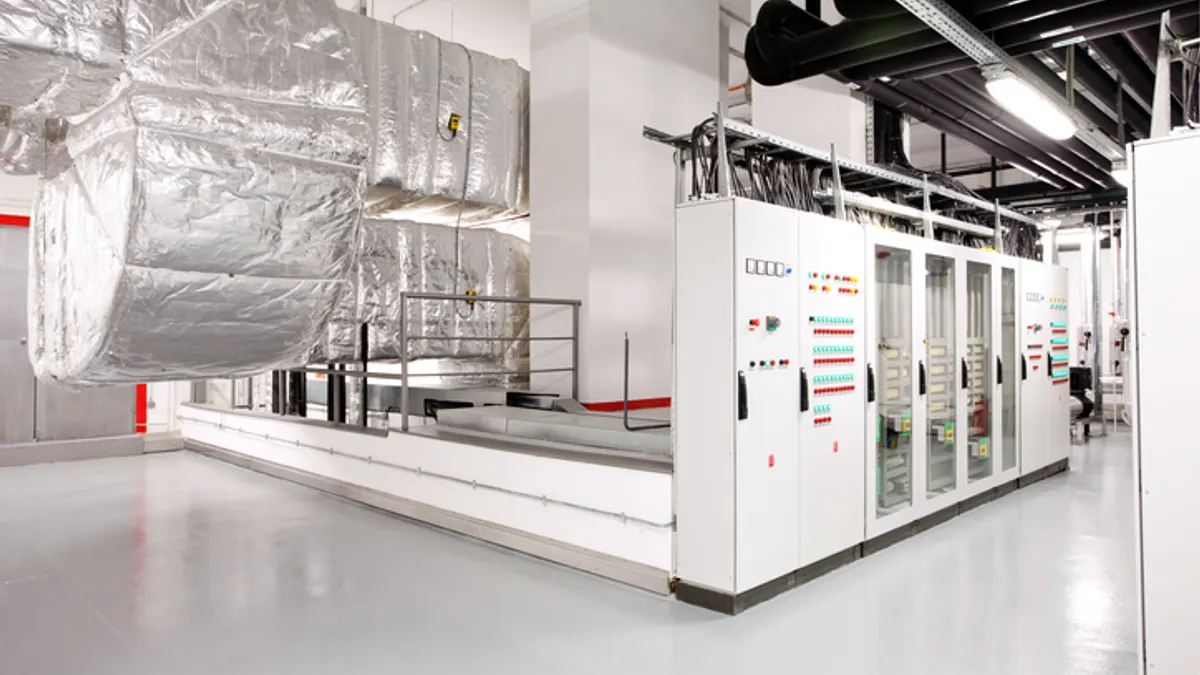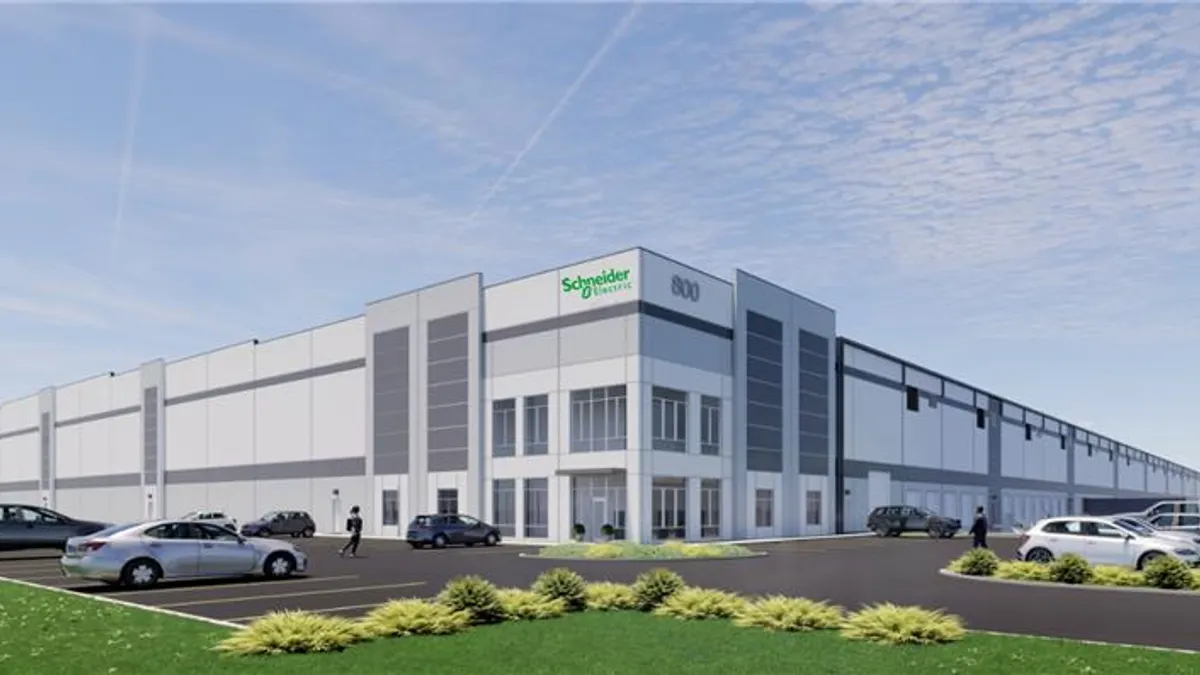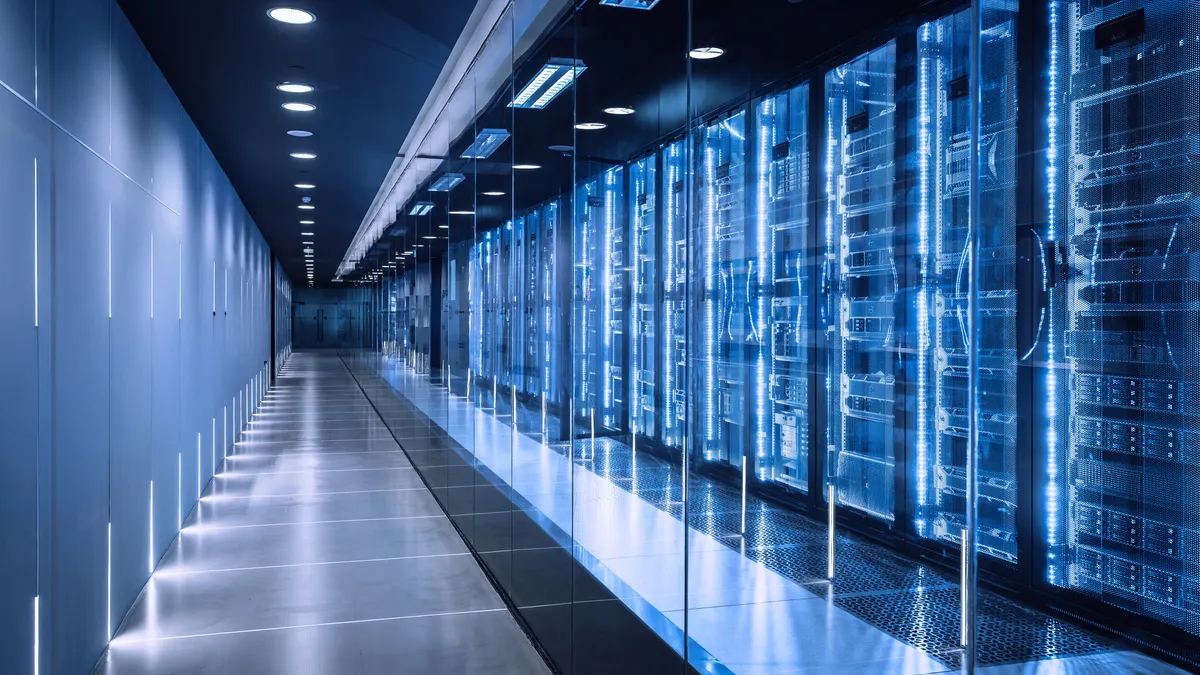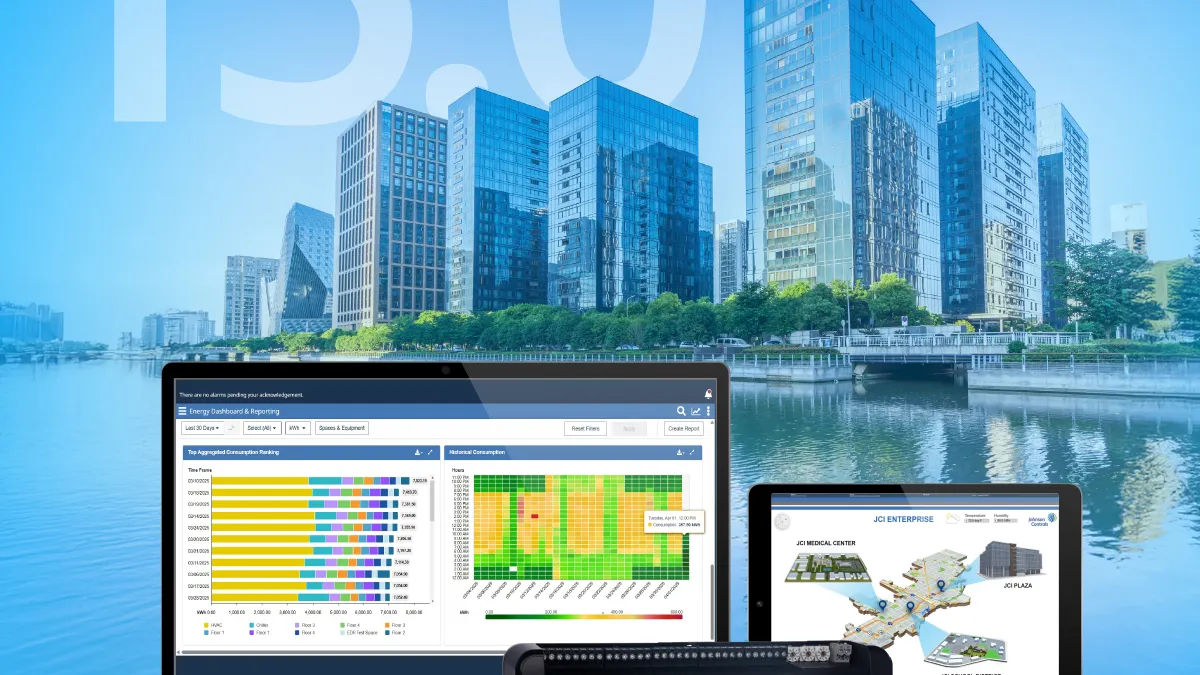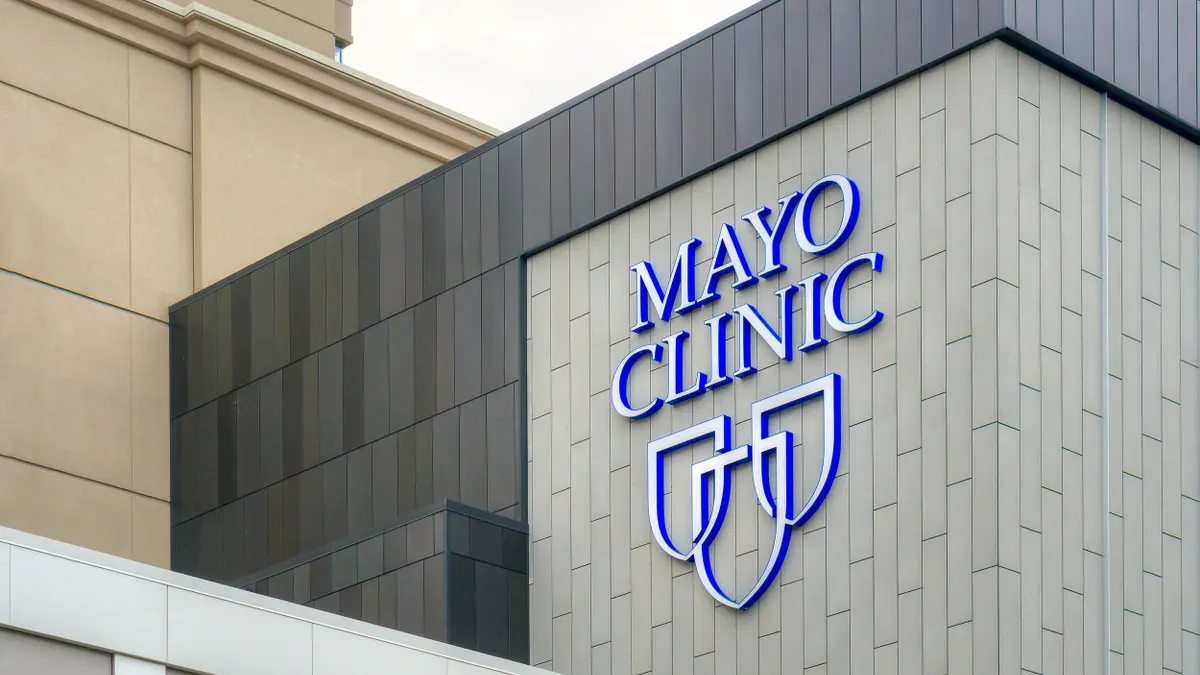CHICAGO — In the basement of the Aon Center here, Brendan Talty moves through a corridor lined with brightly colored tape that shows where to walk, and where not to, under large, brightly colored pipes. Talty, chief engineer of the Aon Center for JLL’s property management business, runs a 21-person engineering team overseeing the city’s fourth-tallest skyscraper.
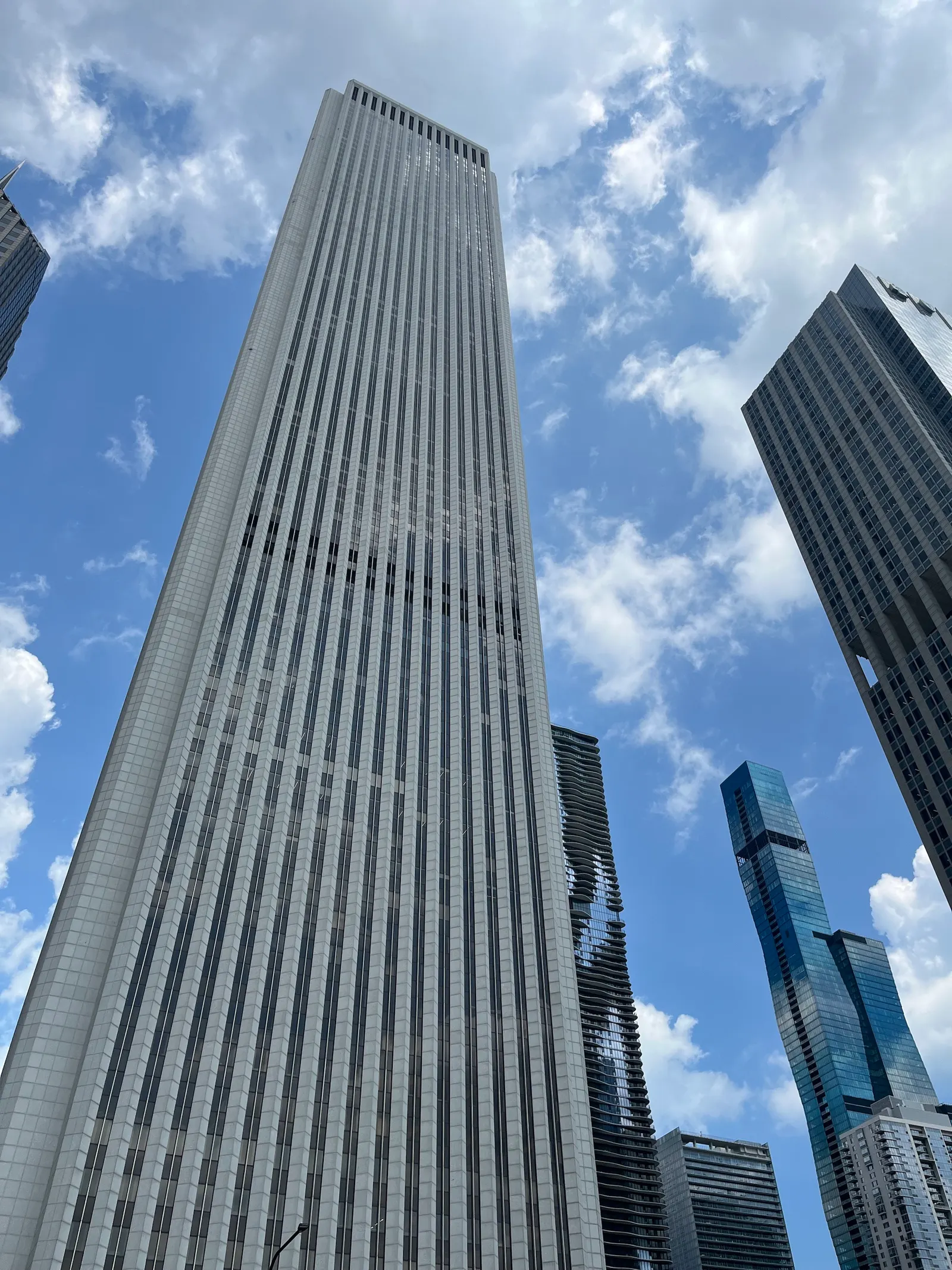
Completed in 1973 as the Standard Oil Building, or “Big Stan,” the Aon Center has 83 floors and is the 13th-tallest building in the U.S., at 1,136 feet. After cracks were found in the exterior, the building was reclad in 1992 and more recently was upgraded with a redesigned lobby, modernized elevators and improvements to the doors connecting the building to Millennium Park.
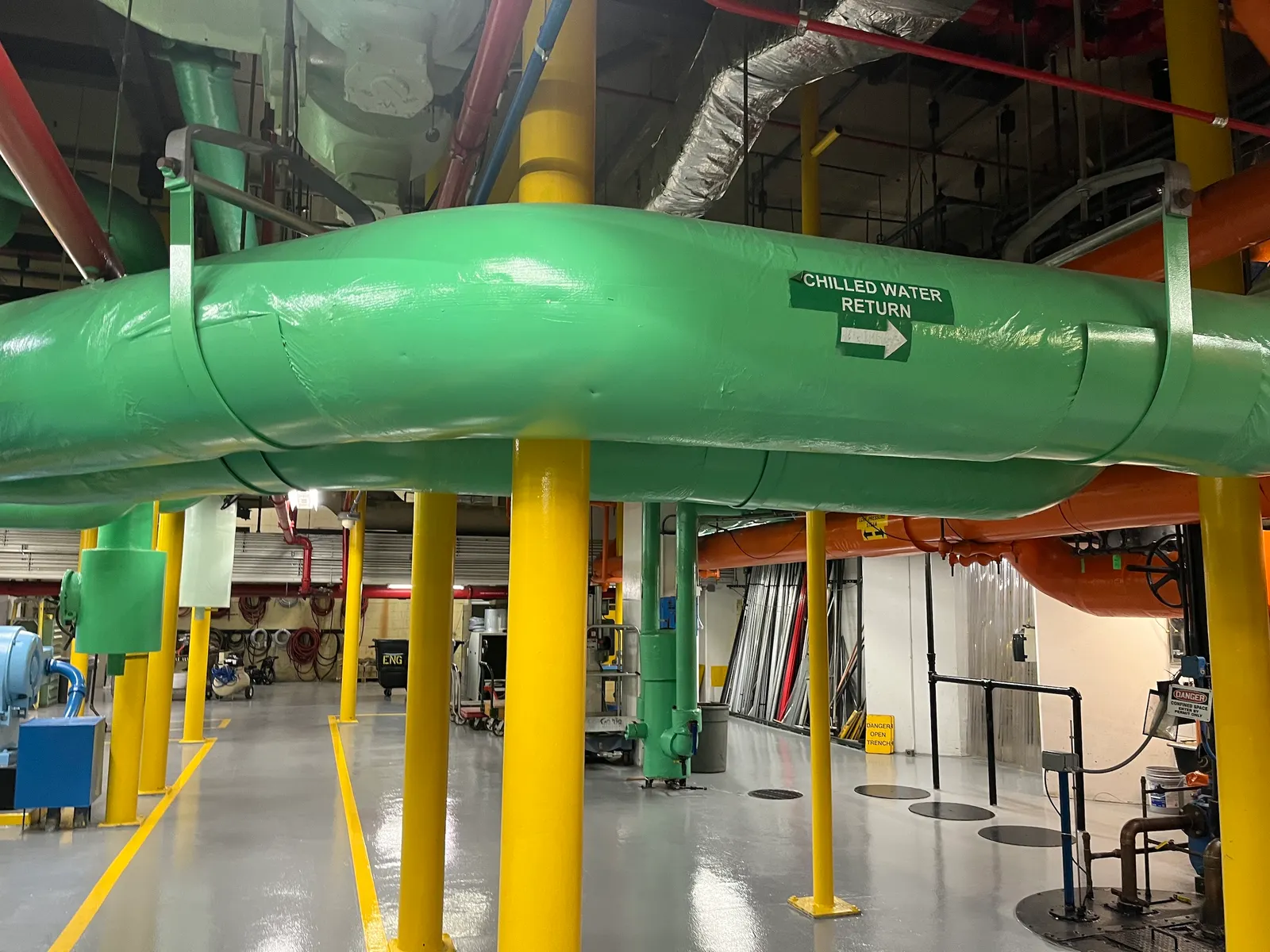
The building is home to more than 8,000 employees of Fortune 500 companies that include Kraft Heinz, Microsoft, HCSC, KPMG, Aon and JLL — which calls the skyscraper home. In addition to the four and a half floors of headquarter space it occupies, the firm oversees the building’s mechanical and other systems and provides property management services to the building’s tenants.
“Every day is a puzzle. That puzzle is challenging, and you really have to think about how all the pieces are going to fit together to make an amazing experience or product.”

Adrienne O'Brien
Workplace Manager, Midwest Region, JLL
The mechanical parts of the building’s operations often begin and end with Talty, whose team of engineers is in charge of keeping the building’s systems operating safely and efficiently. That means monitoring and maintaining one Cleaver Brooks boiler (max steam capacity 32,000 lbs. per hour), two large Unilux boilers with Weishaupt burners (max steam capacity of 25,000 lbs. per hour each), chilled water from a district cooling system operated by CenTrio Energy, and the HVAC controls and equipment that run through the building.
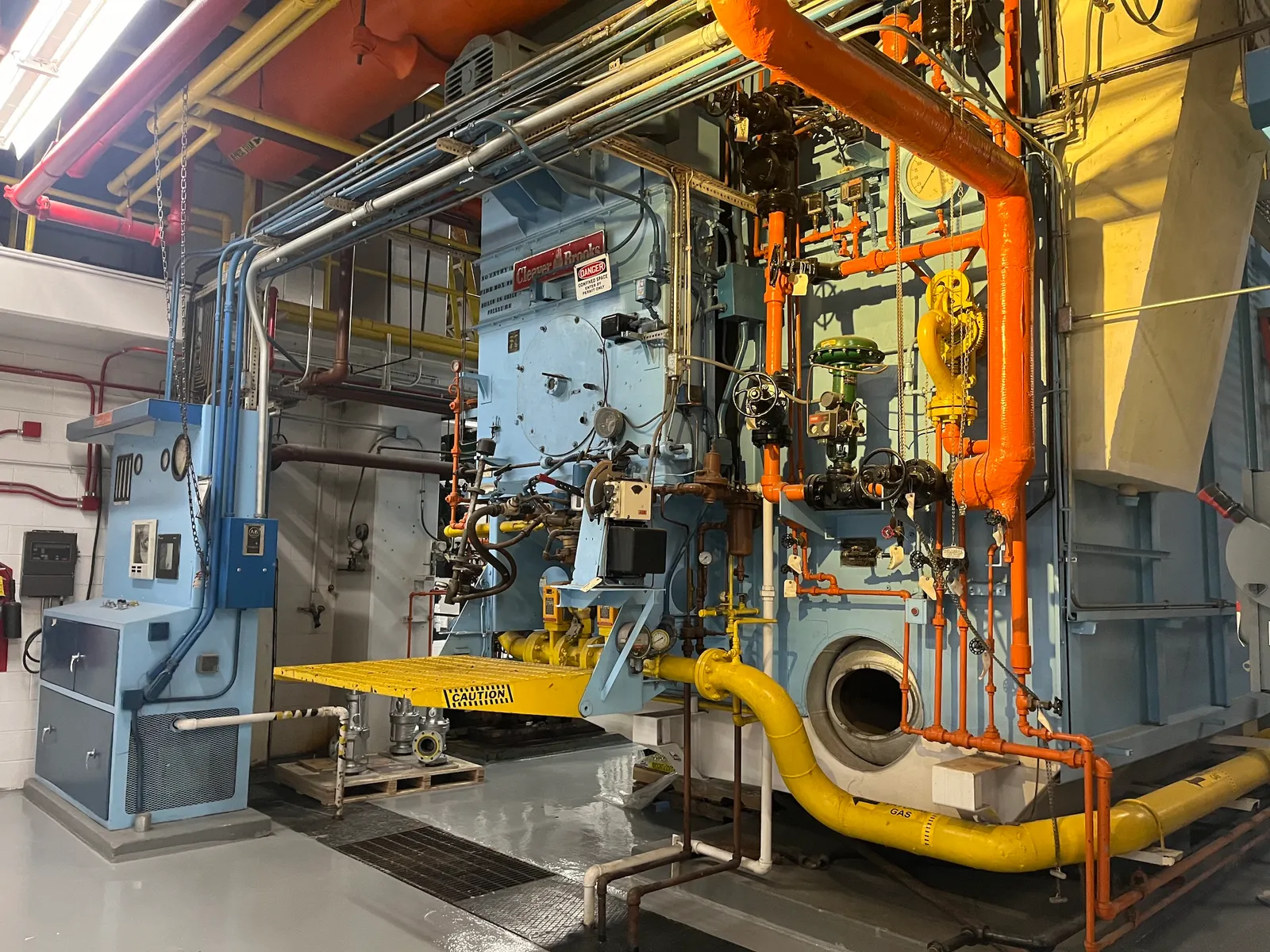
On top of their maintenance and compliance work, the engineers try to find ways to improve the energy efficiency of the building’s systems to reduce costs and emissions, according to Talty. His team recently decommissioned a Cleaver Brooks boiler that wasn’t needed and conducted a steam study to see if they could replace more of the building’s energy with electrification.
One change they’re looking at is installing a combined heat and power unit where the decommissioned boiler used to be as a way to generate electricity using steam that’s already being produced.
The change is expected to create a power unit that’s 70% to 90% efficient versus the 45% to 50% efficient they would get with separate systems, Talty said. Utility bills would be lower, too, with the on-site electricity generation. The combined unit would also reduce emissions compared to grid electricity and reduce the building’s dependence on grid power, improving resiliency.
To improve efficiency further, the team is updating the building energy management system, first by replacing obsolete controllers, which will enable them to implement conservation measures, Talty said. Two other phases will follow.
Meeting sky high expectations
In its role of property manager, JLL faces the same trends impacting the broader commercial real estate market, including the need to align buildings to what today’s workforce wants: attractive, flexible and functional space, high-tech amenities and healthy indoor air quality.
Tenants want buildings that are sustainable and energy efficient, so staying on top of building system improvements and maintaining open lines of communication with occupiers is crucial, said Jenny Hosmon, senior vice president and Aon Center operations manager at JLL.
Hosmon is in charge of leasing space, communicating with tenants and ensuring they’re safe and satisfied.
One of the assets for keeping tenants satisfied is the Cloud Level, a conference center, fitness facility and lounge on the building’s 70th floor, making it the highest amenity space in Chicago. Opened in 2019, the space provides panoramic views of the city and gives employees and tenants a place to host meetings, meet up or decompress.

The space is managed by JLL’s experience management team in partnership with Infuse Hospitality, a foodservice management company. Together, they keep the lounge stocked and manage events. Another partner, Lulafit, manages the fitness center, which employees can access for an annual fee. The experience management team also handles concierge services, tenant engagement and event planning, working in tandem with Hosmon’s team.
For management issues involving its own headquarters operations, many requests go to Adrienne O’Brien, workplace manager of JLL’s Midwest region, and Patricia Byrne, workplace coordinator for JLL work dynamics.
“I love that I get to … fix the lighting system, install sensors” as well as oversee the property management side, said O’Brien.
Providing an experience at JLL HQ
For employees and tenants, the building experience often comes down to the quality of the food and beverages and how well the space works for collaboration, breaks and other workplace needs, Byrne and O’Brien said.
A report by ezCater based on a survey of 1,000 U.S. workers supports the idea that employees and tenants want informal, social spaces, including outdoor areas, breakrooms and eating areas.
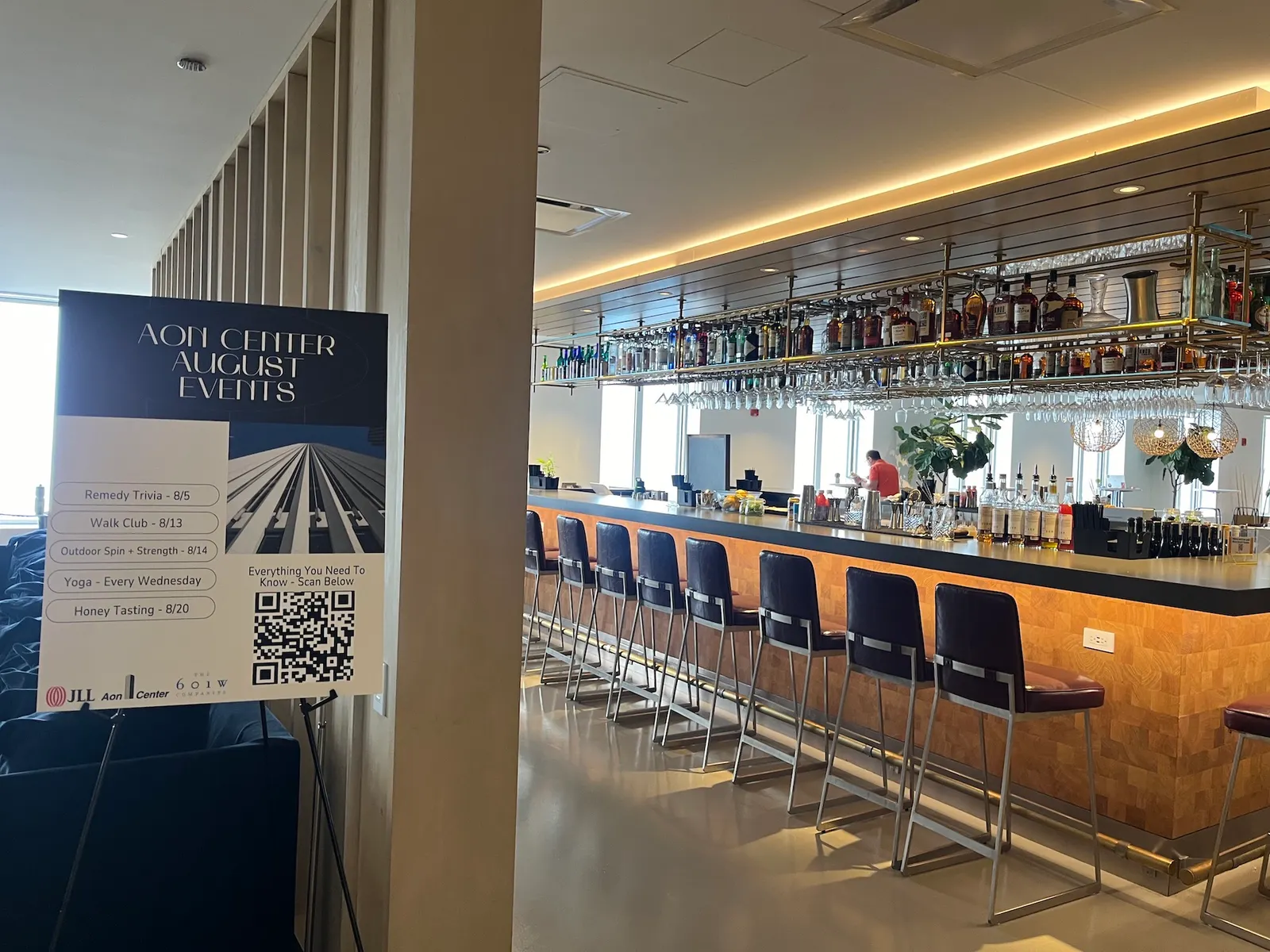
Workers are happiest when the building space leans into both technology and in-person ways to connect, the ezCater report says. “If those in-person gatherings involve food, even better,” the report says.
One way JLL tries to meet those worker preferences is with commercial grade dishwashers on all of its floors. The appliances heat to 280 degrees Fahrenheit, making them sanitary for food service purposes. That’s enabled the firm to remove paper and plastic products from its food and beverage areas, O’Brien said.
“There’s significant cost savings, plus it helps with our sustainability goals at JLL and really brings a sense of home to the office, O’Brien said. “When you walk in and you're handed a cup of coffee or a glass [rather than a paper cup that gets thrown away], it really makes for this incredible building experience and builds that sense of belonging.”
A day porter is on-site during the week to load and unload the dishwasher with cups and other service items. When a machine needs to have work done, employees file a ticket that is accessed and managed on JLL’s Corrigo platform, replacing a previous email system, Byrne said.
“Everything funnels through Corrigo,” she said. “We see invoices that come in and then you have your open work orders. It’s used in many ways.” As the point person for the service requests, Byrne will decide whether to pass the ticket along to a vendor or to another JLL department.
Moving forward, that process is expected to become more efficient with the help of AI through JLL Serve, the firm’s AI-powered facilities management application that integrates data from assets to provide a centralized view of operational performance, maintenance and compliance requirements.
“JLL Serve is the next step in the Corrigo process that we’re about to implement,” O’Brien said. “That will connect the vendor to the work order and then turn around and bill out. “It’ll just really be that glue that connects all those dots together.”
JLL is also implementing a QR code system to provide repair, maintenance and preventative maintenance services, or RMPM. With that system, operators can scan a code during regular maintenance checks, whether conducted daily, monthly or quarterly, and get information that can help inform next steps.
“The nice thing about this is that it gives you that history to go back and really look at things,” said O’Brien. “We recently used Corrigo to go look up an issue that we were having with one of our coffee machines. It was constantly breaking. We looked back and it was like seven or eight tickets, so we reached out to the vendor and said ‘Time to replace the machine.’ That’s a perfect example of the system working for us to make a more efficient process.”
The broader trend of companies requiring employees return to the office is being driven in part by both employers and employees wanting more collaboration and both seeing the office as a hub for teamwork and communication, according to JLL’s 2025 Global Occupancy Planning Benchmark Report.
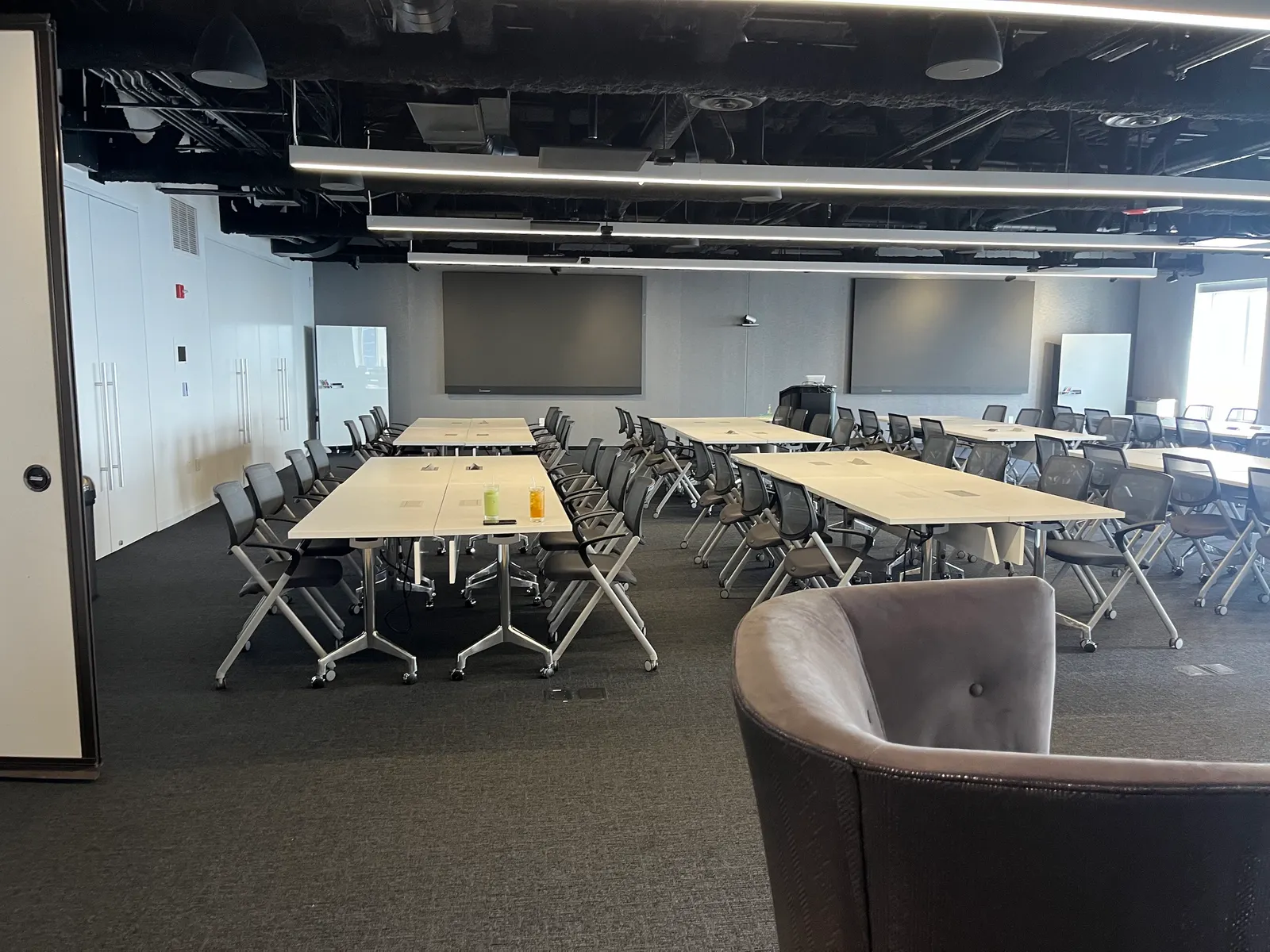
One way JLL works toward this goal is through Resource Scheduler, a company tool that employees can use to look at rooms and reserve them, with pictures and information on seating, audio-visual support or whether there’s window access. JLL’s workplace management team also uses Space, the company’s platform for managing seat assignments, reserving desks and making other space management decisions.
“Every month we get a badge study based on attendance in the office based on WiFi and badge swipes,” O’Brien said. “They compile that data and we can look at each one of those zones and areas to make sure that the number of seats assigned to that particular unit are appropriate for their attendance in the office and then base their seating on that.”
Delivering on both hard and soft services
Running the Aon Center, like many buildings, comes down to ensuring building systems are functioning properly and making tenants happy, according to Michael Thompson, workplace management lead of the Americas at JLL.
“If you’ve got great hard building services, that Brendan [Talty] is running, but you don’t have great hospitality, the person’s experience is not going to be great,” said Thompson. “Likewise, you can have great hospitality and everything, but if the building isn’t cool, people don’t feel safe and the elevators aren’t working, you aren’t going to have a good experience.”
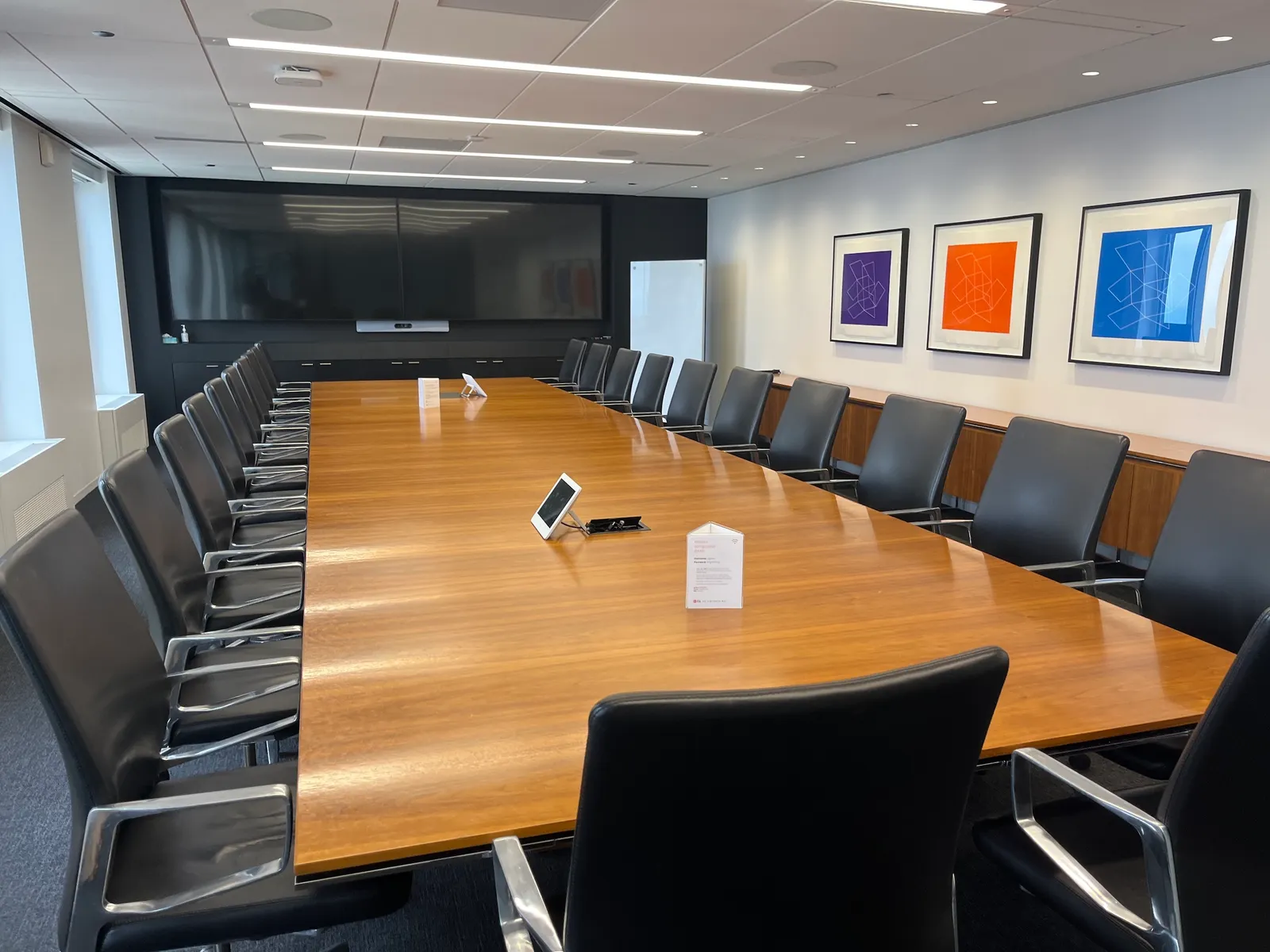
With employers and tenants looking for office space that meets all of their needs — sustainable and efficient energy use, healthy indoor air quality, good mix of flexible, collaborative and other types of space, with amenities and technology — occupancy planning becomes crucial to attracting and retaining workers, Thompson said.
“Having this kind of understanding of what your occupancy patterns are really drives everything, from an energy perspective in heating and cooling the buildings to what we need to do from a hospitality perspective,” he said.
“Every day is a puzzle,” O’Brien said. “That puzzle is challenging, and you really have to think about how all the pieces are going to fit together to make an amazing experience or product.”


